Week 1
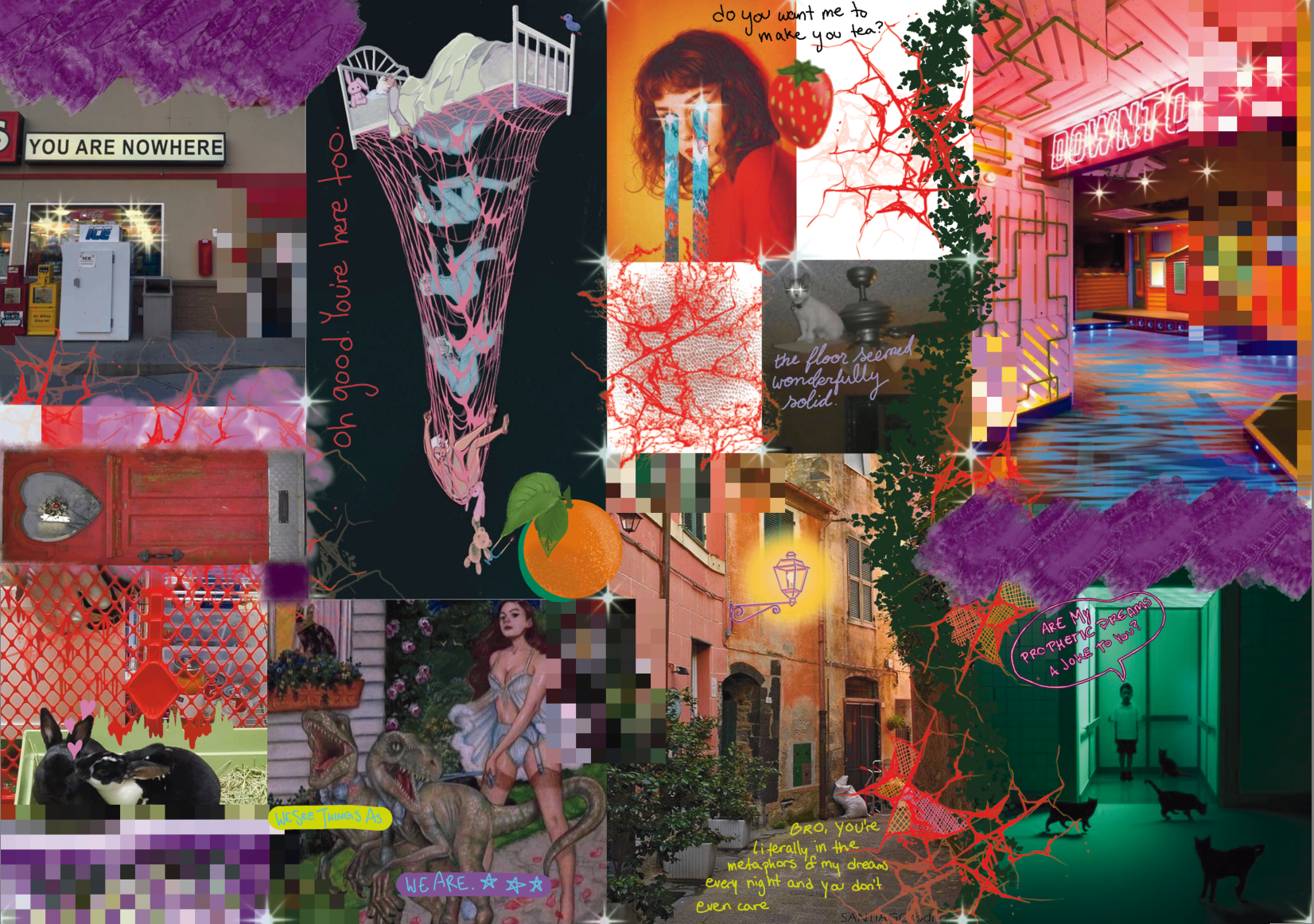
Above is my first (probably of many) brainstorming/inspiration collages for the projects and thematic explorations we’ll be doing in this course. I’ve included photos, art from other artists, my own digital drawings, and handwritten quotes that are connected to the themes or ideas I want to work with. I added in the pixelation on some of the pictures and also drew over top to highlight some of the quotes and pictures. The program I used was Krita, which is a really cool digital art program I discovered in highschool. It’s open-source and free, and includes a plethora of different brushes and tools you can use. It also has an animation workspace, which I haven’t experimented with much yet, but I’d like to. To draw in this program I use a Wacom tablet and pen.
WEEK 2
Material testing:
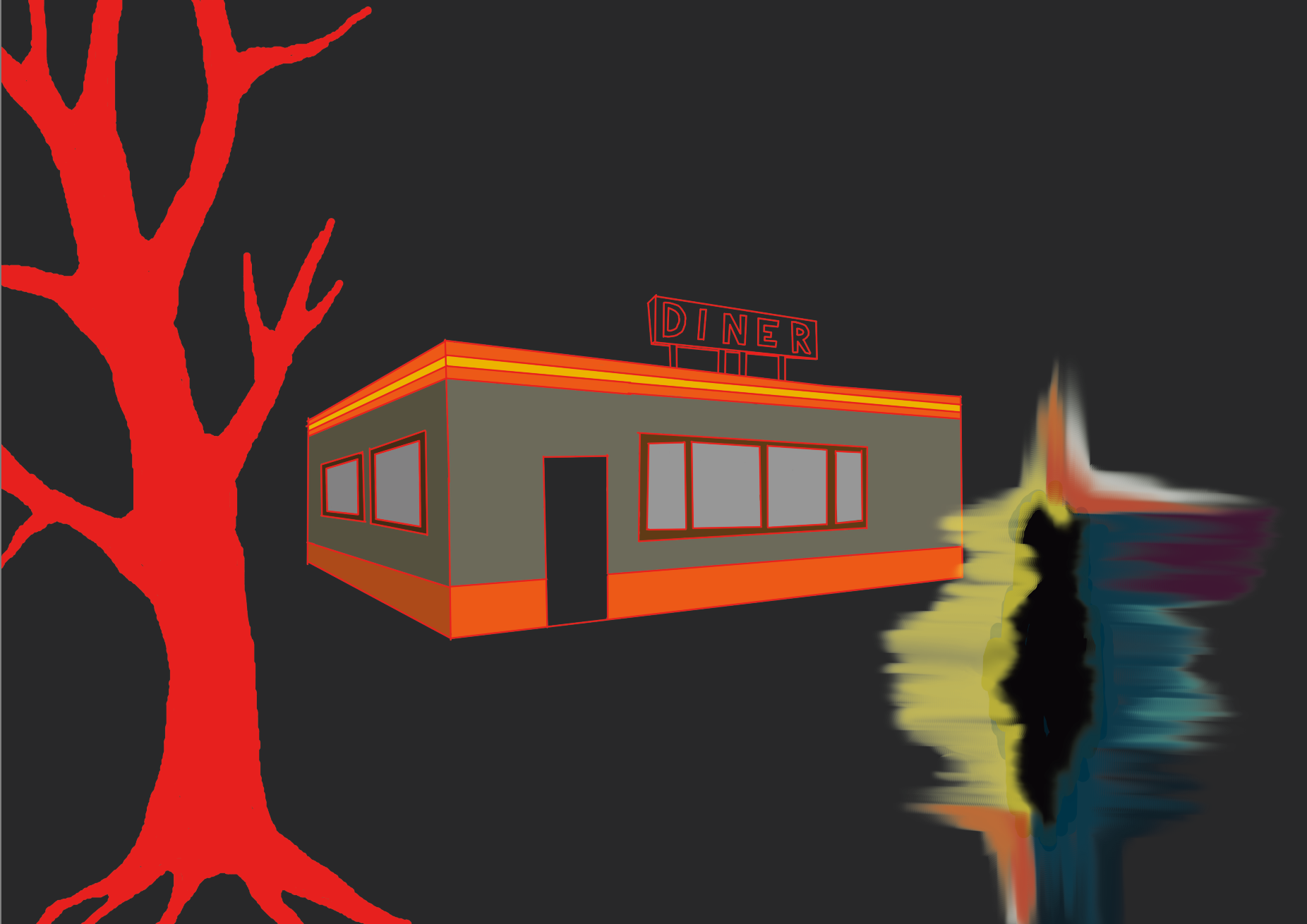
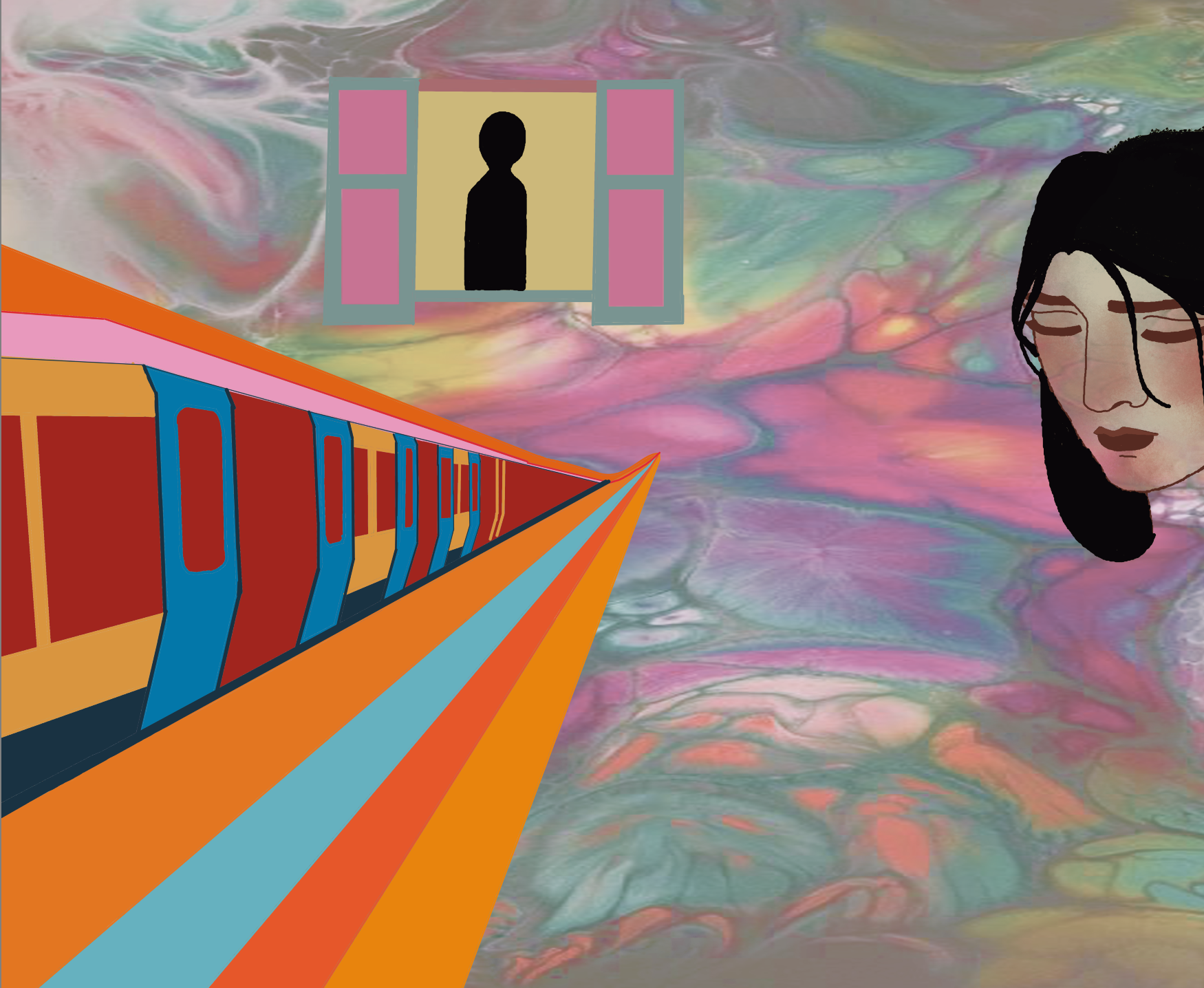

Above are three digital drawings I started as a part of my material testing and experimenting this week. I’m trying to find symbolism in my dreams that I can use in these pieces as well, so I’ve included a bit of colour psychology as well as literal symbols like trees, trains, compasses and moons. I want to find a happy medium between thoughtful planning of each drawing and letting my imagination run, so I’ve found drawing digitally and doing small sketches very helpful.
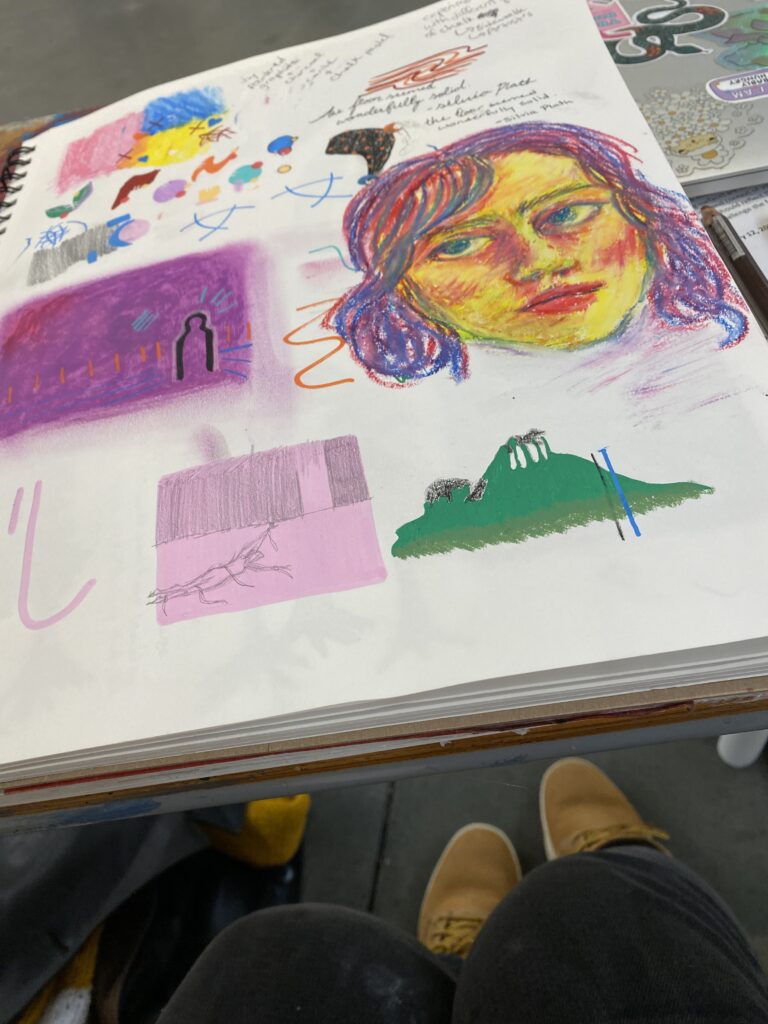
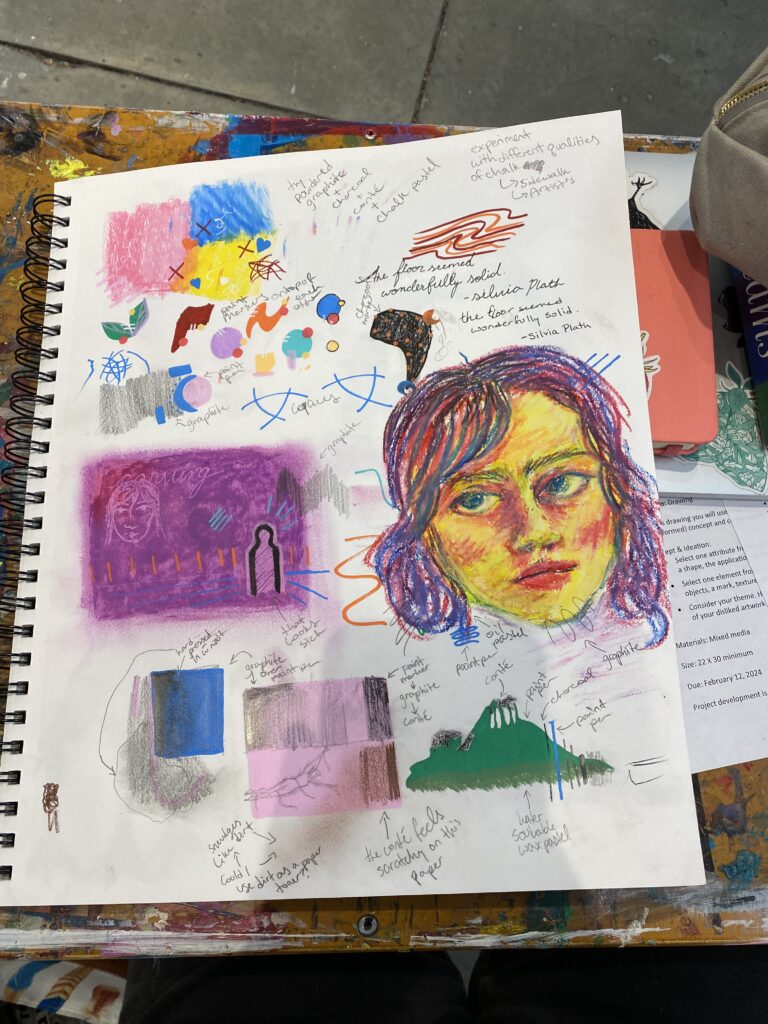
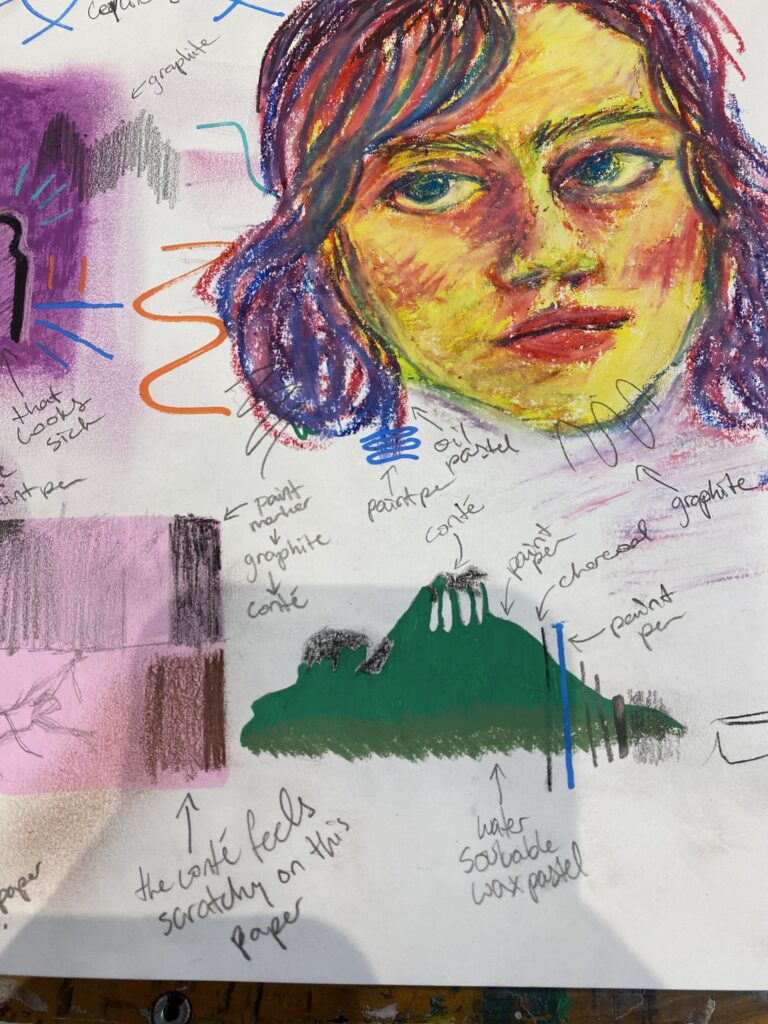
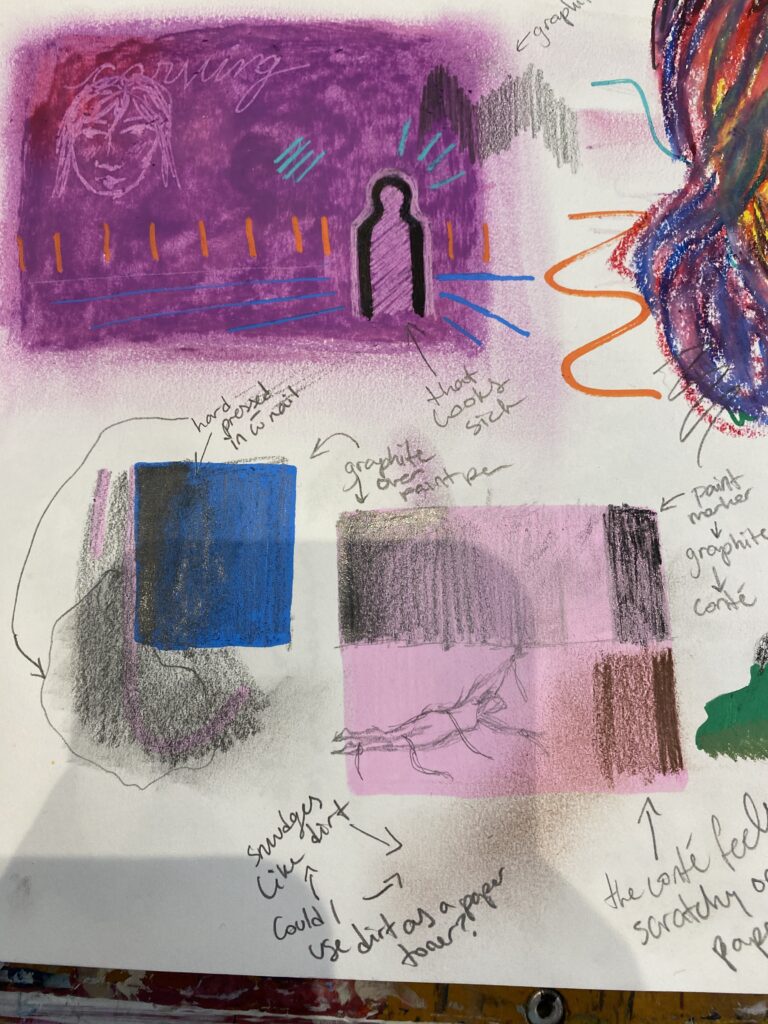
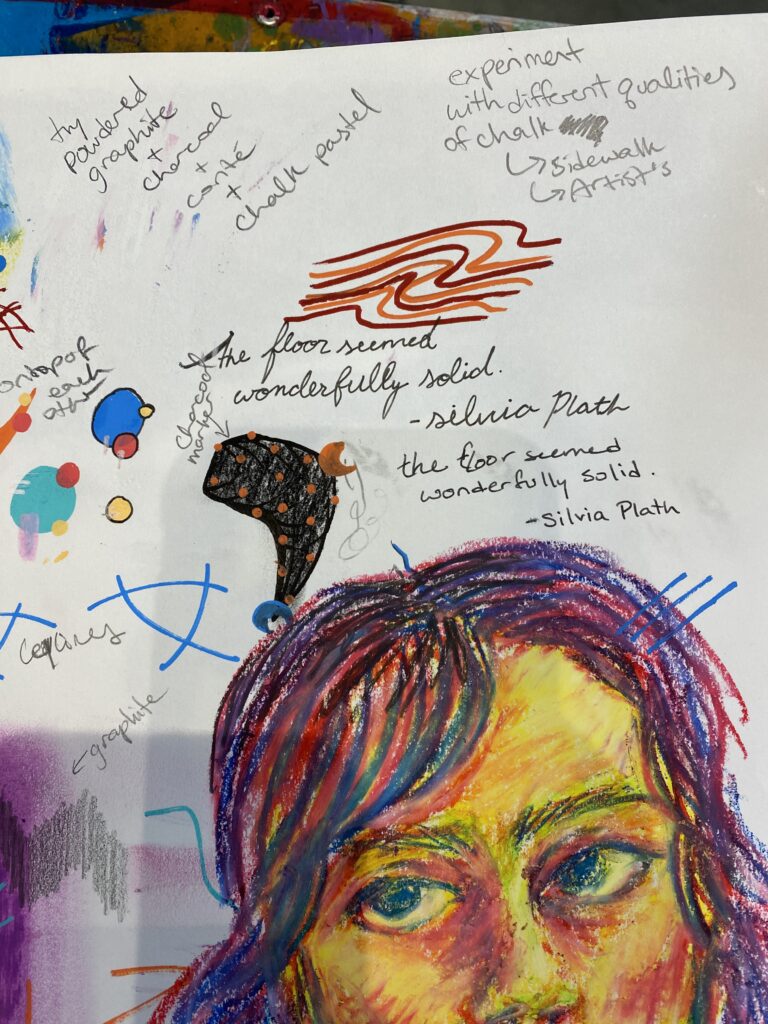
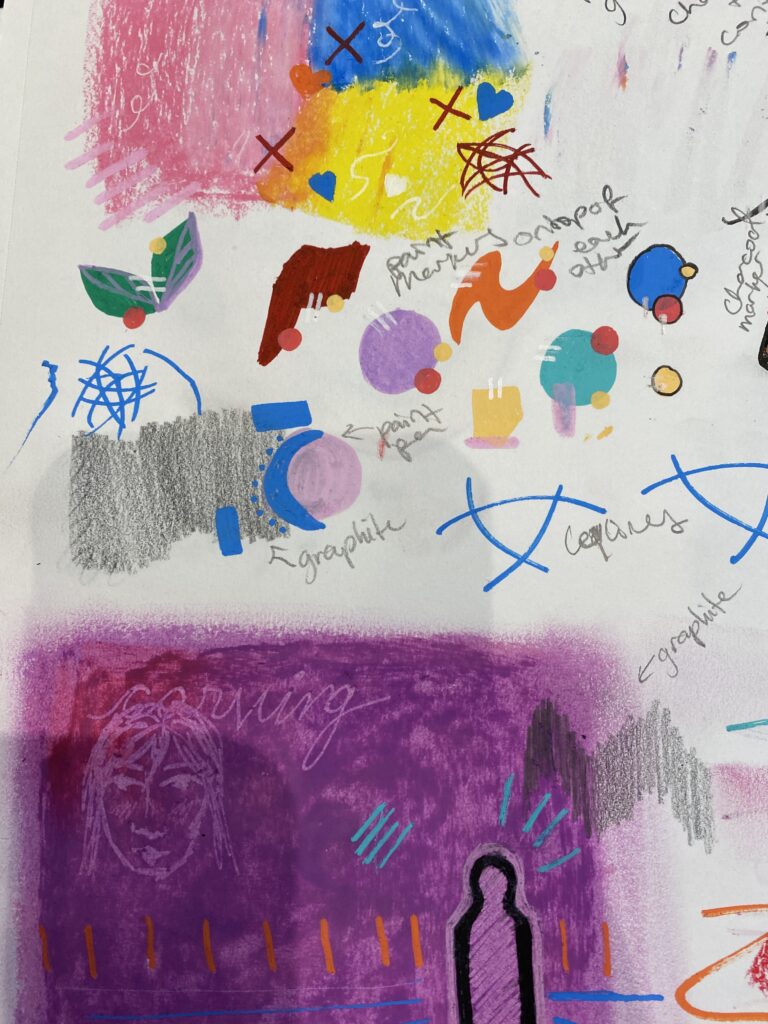
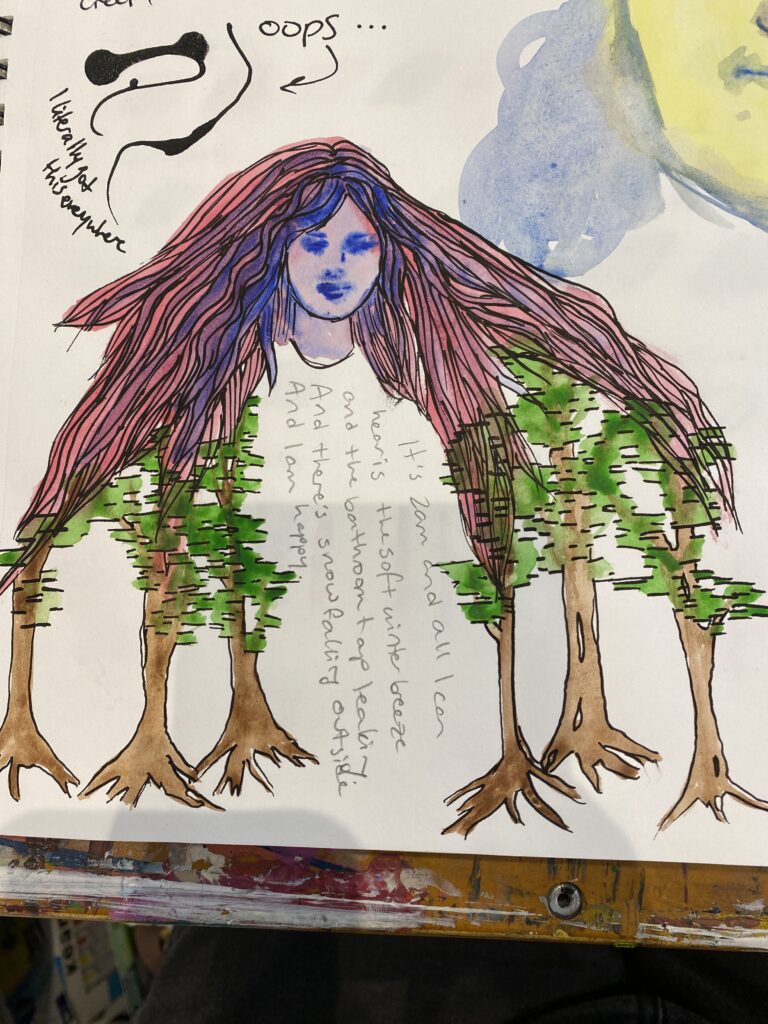
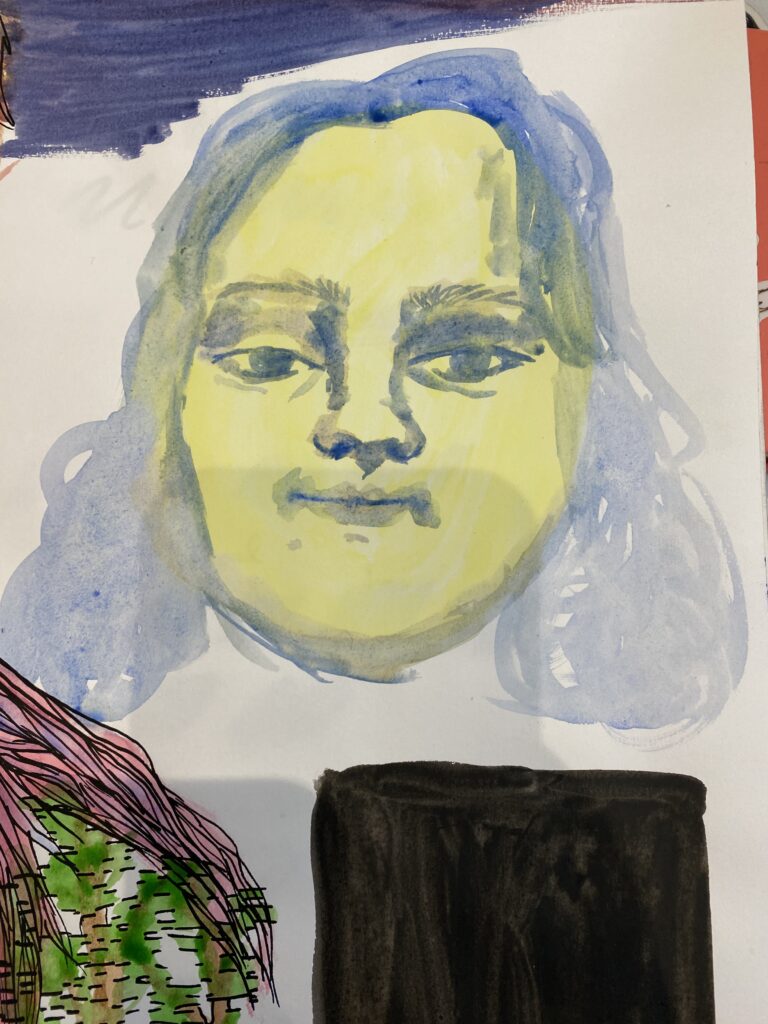



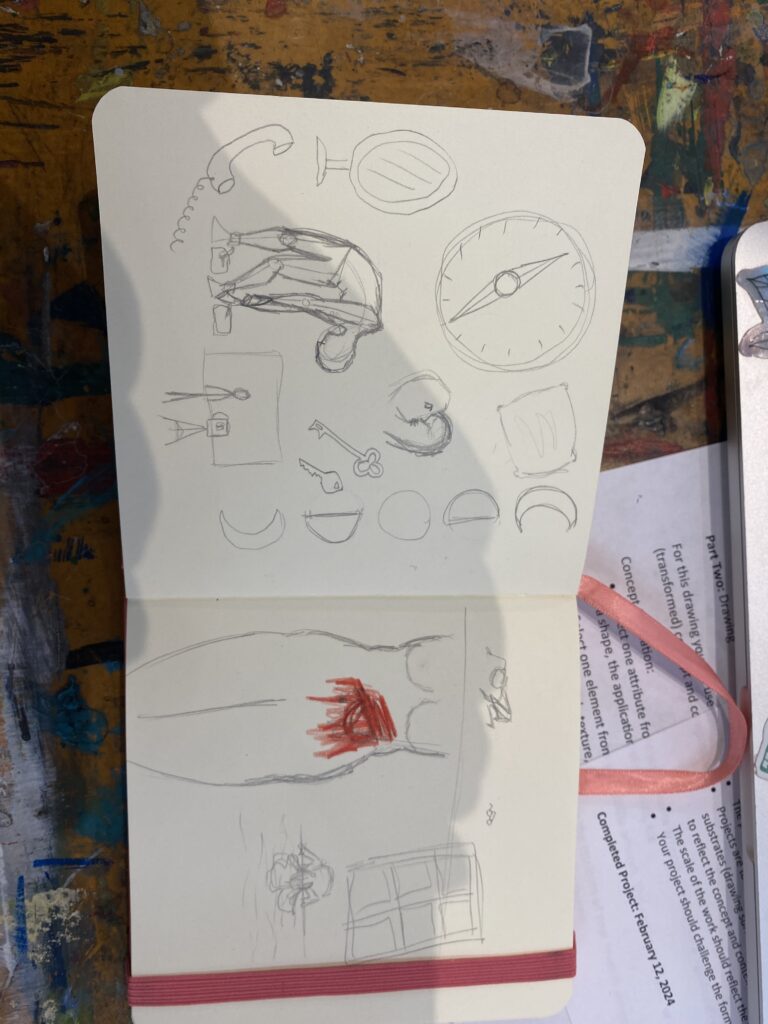
Week 3
Thematic Descriptions/Project Proposal & Research
Dorothea Tanning

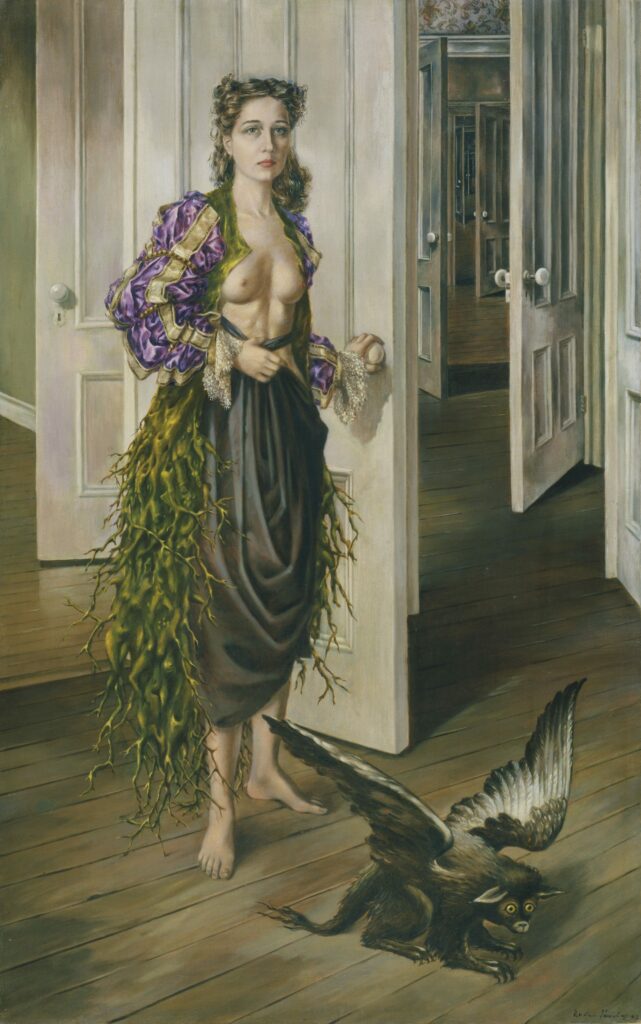
- ‘here in the museum is the real explosion, rocking me on my run-over heels. Here is the infinitely faceted world I must have been waiting for. Here is the limitless expanse of POSSIBILITY, a perspective having only incidentally to do with painting on surfaces.’ – TATE
Leonora Carrington
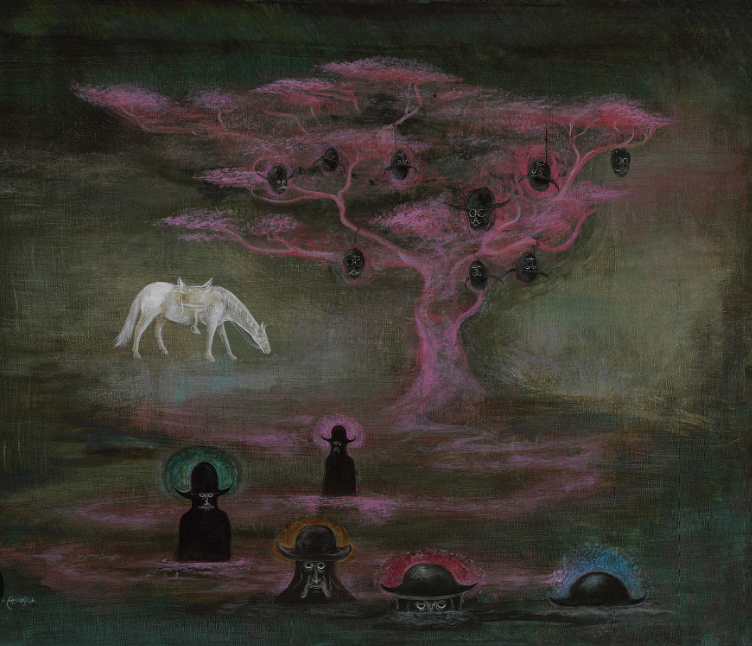
- Over the course of her eight-decade career, Carrington continued to explore the mystery of the world around her, claiming at the end of her life, “The only thing I know, is that I don’t know.” – MoMA
- Surrealism’s attitude toward women was ambivalent. André Breton, the founder of the movement and a key impresario, was fascinated by the Freudian idea that the female psyche was unrestrained, mystical, and erotic. And some female artists associated with the movement, such as Carrington, were framed as the femme enfant (woman child) who served as muse to the male artist. But as Carrington once said, “I didn’t have time to be anyone’s muse…I was too busy rebelling against my family and learning to be an artist.” – MoMA
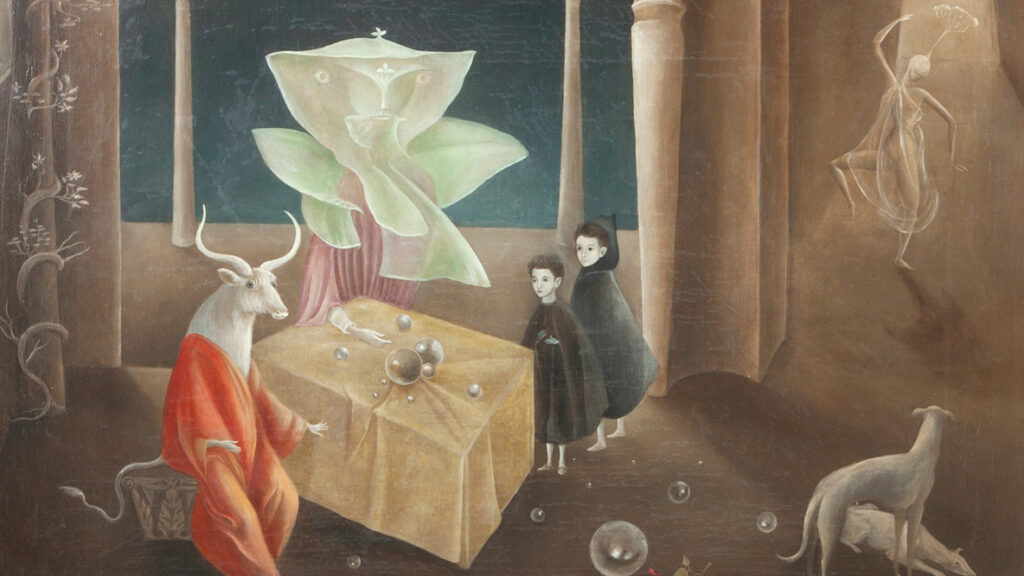

Rene Margritte

- During the German occupation of Belgium, Magritte changed his point of view on the Surrealist movement. Surrealism did not rattle society; Nazism did. As war devastated Europe, René Magritte wrote in a letter to André Breton, “the confusion and panic that Surrealism wanted to create in order to bring everything into question were achieved much better by the Nazi idiots than by us.” To respond to the changes of the 1940s, Magritte believed Surrealism had to change too. – SFMoMA
- an intense desire to confront mystery and truth in painting. – SFMoMA
- He coined his new method of painting “Sunlit Surrealism” and while his iconography remained just as strange – SFMoMA
- Magritte himself remarked that “Charm and menace can enhance each other through their union.” Perhaps then, these colorful colors are not escapist, instead enhancing and calling attention to the violence of the times. Some of his paintings underscore that reading, with gruesome subject matters, like a girl eating live birds—hardly charming. – SFMoMA
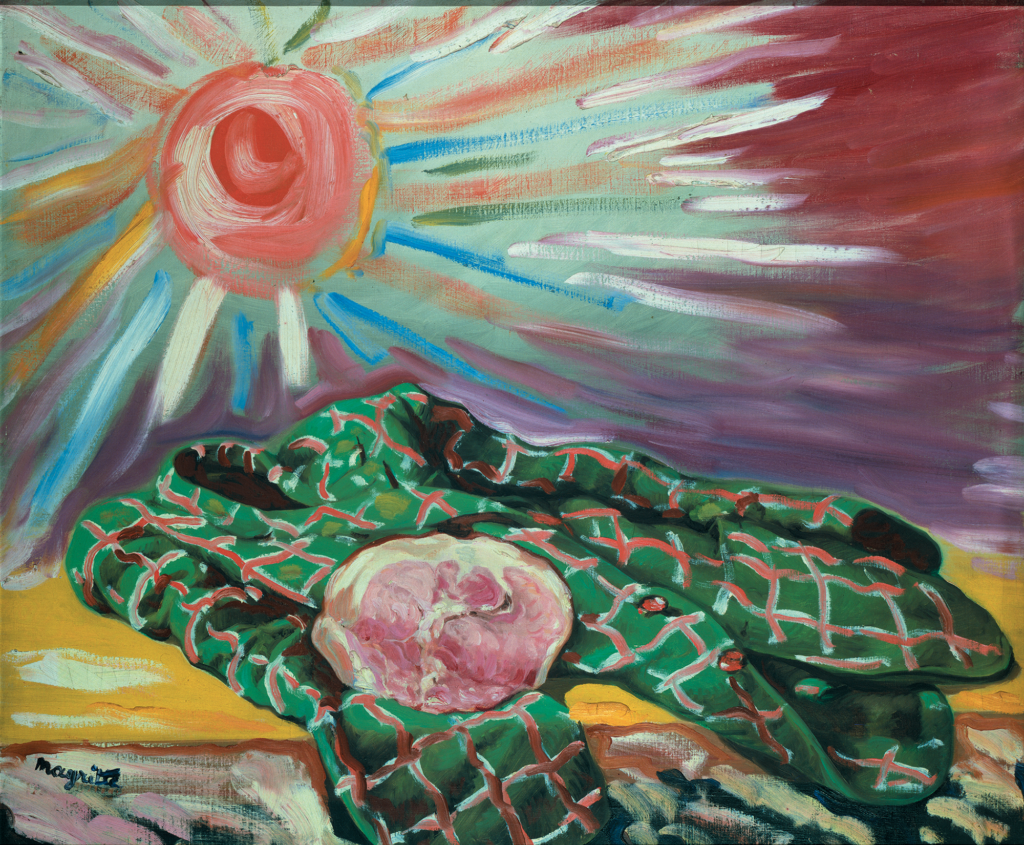
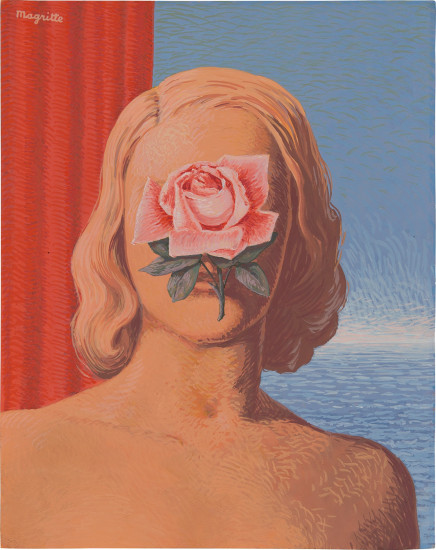
Project Ideation/Description:
Personal narrative, Beyond reality, dreamscapes, surrealism but without the Freud or Dalí crap
Landscape: Imaginary, realistic, urban, rural
Still Life: Composite
Figurative: Full or partial figure, realistic, imaginary
Elements: Line, shape, colour
Principles: Rhythm and movement, emphasis
Questions:
What is the significance of the theme or idea?
To connect people to the feeling of derealisation and paranoia which may or may not be foreign to them, which is quite scary to me but can be also intriguing like a car crash. You can’t look away.
Where is the idea/theme being developed taking place? How does location play a role in the composition?
dreamscape landscapes or layered backgrounds to add depth and interest in what otherwise might be a boring background.
Why is this of particular importance?
I want to express myself and explore art in a way that is interesting to me through a theme that is personal to me.
Who might be involved in the making/conception of this idea?
Myself, my family and friends, as well as some books I have on dreaming and brain physiology and dream psychology. Also surrealist artists (drawers or otherwise).
Why should anybody else care?
It’s visually engaging and extremely subjective. Eye-candy that also means whatever you think it means (regardless of whether that’s what I, the artist, intended).
How is what is being shown connected to the idea/theme?
The line between reality and imagination is being crossed with the imagery. Every object and figure has a specific meaning like a puzzle. (I made the picture but the viewer cuts the pieces)
When does this visualization of the idea take place? How does time play a role in the consideration of the idea/theme?
Much of the ideation of this project takes place late at night or early in the morning as it is heavily inspired by my own dreams and nightmares
Basically, I want to make drawings that make you feel a bit uncomfortable, like you should maybe look away from some parts, but are also interesting enough that you need to keep looking. Pieces that are like mysteries with analogies, metaphors, references and symbolism all throughout that make the viewer question what any of it means, if it means anything at all. Maybe I’ll put each one with an accompanying text (not an explanation, per se, but just more exposition?).
Derealization
Derealisation is where you feel the world is unreal. People and things around you may seem “lifeless” or “foggy”. You can have depersonalisation or derealisation, or both together. It may last only a few moments or come and go over many years. – NHS
Depersonalization-derealization disorder occurs when you always or often feel that you’re seeing yourself from outside your body or you sense that things around you are not real — or both. Feelings of depersonalization and derealization can be very disturbing. You may feel like you’re living in a dream. – Mayo Clinic
Depersonalization symptoms:
- Feelings that you’re seeing your thoughts, feelings, or body or parts of your body from the outside. For example, you may feel like you’re floating in the air above yourself.
- Feeling like a robot or that you’re not in control of what you say or how you move.
- The sense that your body, legs or arms appear twisted or like they’re not the right shape. Or they may seem larger or smaller than usual. You also could feel that your head is wrapped in cotton.
- Emotional or physical numbness of your senses or responses to the world around you.
- A sense that your memories lack emotion, and they may or may not be your own memories.
Derealization symptoms:
- Feeling that people and your surroundings are not real, like you’re living in a movie or a dream.
- Feeling emotionally disconnected from people you care about, as if you were separated by a glass wall.
- Surroundings that appear out of their usual shape, or are blurry or colorless. Or they may seem like they only have two dimensions, so they’re flat with no depth. Or you could be more aware of your surroundings, and they may appear clearer than usual.
- Thoughts about time that are not real, such as recent events feeling like the distant past.
- Unrealistic thoughts about distance and the size and shape of objects.
- – Mayo Clinic
These feelings, in combination with anxiety and panic disorder can lead to intense bouts of paranoia- feeling like nothing around you is real and you are also not real can be really scary and sometimes the only thing I can do is ignore the feeling until it goes away. Fake it ’till you make it. This situation can make you feel like someone’s watching you, trying to hurt you, or that you are not yourself and might hurt yourself or someone else.
Occasionally, especially when you’re in a prolonged survival state or prolonged stress, you can also experience dissociative amnesia. This is when you actually forget things about yourself and your life. You may not recognize your family members, photographs of your past, or even your own reflection. Also very scary.
In the end, experiencing these things is your brain’s way of protecting you, but sometimes it over does it. Dissociative states are a coping mechanism.
Usually these things don’t last very long, and it’s quite common to experience these things once in a while in passing. It of course would become a problem if you experienced these symptoms for longer periods of time.